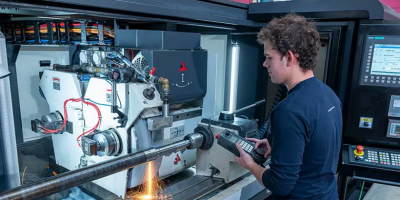Maintaining a pristine pool is every homeowner’s dream. When water mysteriously vanishes, it’s time to face the dreaded possibility of a pool leak.
A leaking pool not only disrupts your aquatic oasis but can also lead to significant structural damage if left unaddressed. It’s essential to learn five common signs of a pool leak and practical solutions to keep your water haven intact.
Regularly monitoring your pool for these signs, especially after extreme weather events, can contribute to early detection and timely intervention.
1. Unexplained Water Loss
One of the earliest signs of a potential pool leak is an unexplained drop in water levels. While some water loss due to evaporation is normal, a sudden and significant decrease indicates a problem.
To check for a leak, conduct a simple bucket test. Fill a bucket with pool water and place it on the pool steps. Mark the water level inside the bucket and on the pool wall. After 24 hours, compare the two. If the pool water level has dropped more than the bucket water level, it’s time for pool leak detection.
2. Persistent Algae Growth
Excessive algae growth, despite regular maintenance and chemical balancing, might be a subtle indicator of a pool leak. A leaking pool allows water to escape, reducing the effectiveness of your pool chemicals.
As a result, algae find a conducive environment to thrive. If you notice persistent algae despite your efforts, it’s wise to investigate for potential leaks.
Addressing these issues promptly can not only improve water quality but also help in identifying and resolving potential leaks.
3. Wet Spots around the Pool
Puddles or consistently wet areas surrounding your pool could be a red flag for a leak. Check the ground for dampness, especially in areas adjacent to the pool walls or plumbing.
Leaks may occur in the pool shell or plumbing system, causing water to seep into the surrounding soil. Identifying and fixing these leaks promptly is crucial to prevent further damage to the pool structure.
Furthermore, observe the areas around the pool deck and equipment. Any signs of persistent moisture or water damage can indicate a hidden leak. Regularly inspecting these spaces can help you catch leaks in their early stages.
Once identified, plumbing leaks can be sealed using epoxy or by replacing the damaged pipes. In addition, upgrading to durable and high-quality liners and sealants can significantly reduce the risk of leaks.
4. Cracks in the Pool Structure
Over time, a pool’s structure may develop cracks due to various factors such as ground movement, temperature fluctuations, or poor construction. While not all cracks lead to leaks, they can be potential entry points for water.
Inspect your pool’s walls, floor, and tiles for visible cracks. Hairline cracks are common and might not cause leaks, but larger cracks can compromise the pool’s integrity, necessitating immediate attention. To assess the severity of cracks, periodically perform a close inspection.
When cracks are identified, it’s important to address them promptly. Epoxy injections and patching materials can be effective for minor cracks. For more severe structural issues, consulting a professional pool contractor is recommended.
5. Malfunctioning Pool Equipment
A malfunction in your pool’s equipment, such as a faulty pump, filter, or skimmer, can contribute to water loss. Perform regular checks on your equipment to ensure proper functionality.
A malfunctioning system can lead to leaks, especially if water is not circulating correctly. If you notice any irregularities or suspect a problem, consult a professional for a thorough inspection and timely repairs.
In addition to regular checks, consider upgrading to energy-efficient and durable equipment. Modern systems not only reduce the risk of leaks but also contribute to overall energy savings and a more sustainable pool operation.
Safeguarding Your Pool Oasis
A leaking pool is not merely an inconvenience; it poses a threat to the longevity of your aquatic haven. By staying vigilant for signs of leaks and implementing proactive measures, you can ensure the continued enjoyment of your pool.
Remember, early detection and timely repairs are the keys to preventing minor leaks from turning into major headaches. Moreover, consider installing an automatic water leveler to maintain consistent water levels, reducing the risk of leaks caused by fluctuations in water height.
Dive into regular maintenance, stay observant, and safeguard your pool oasis for years of refreshing enjoyment.














Comments